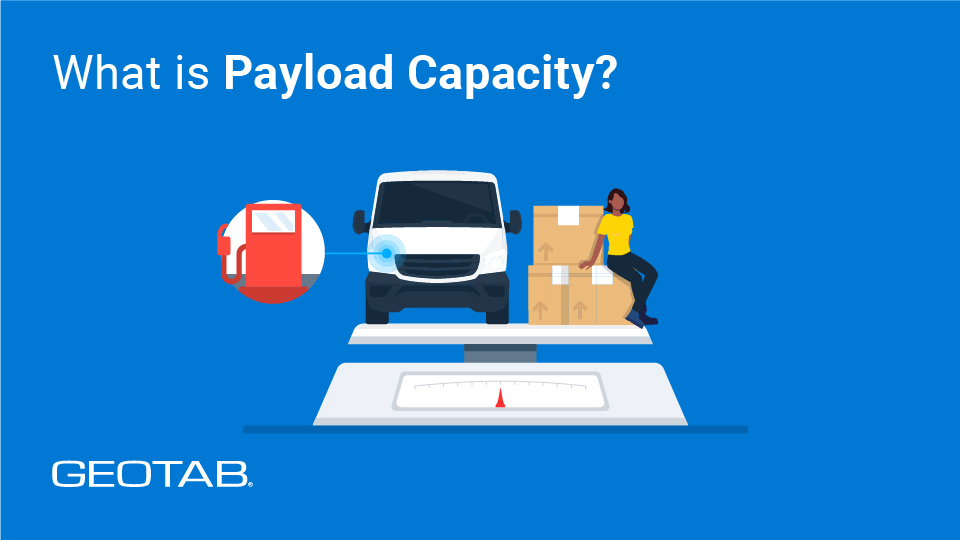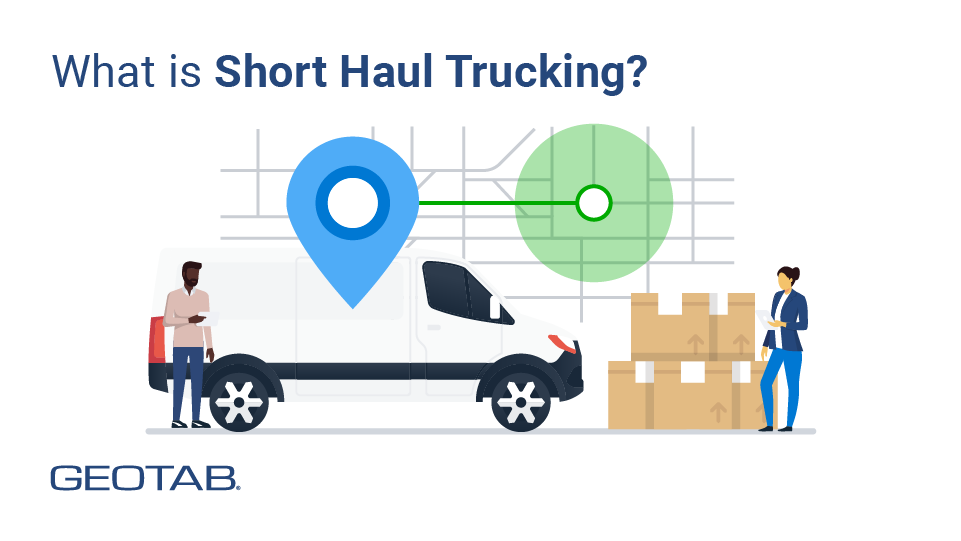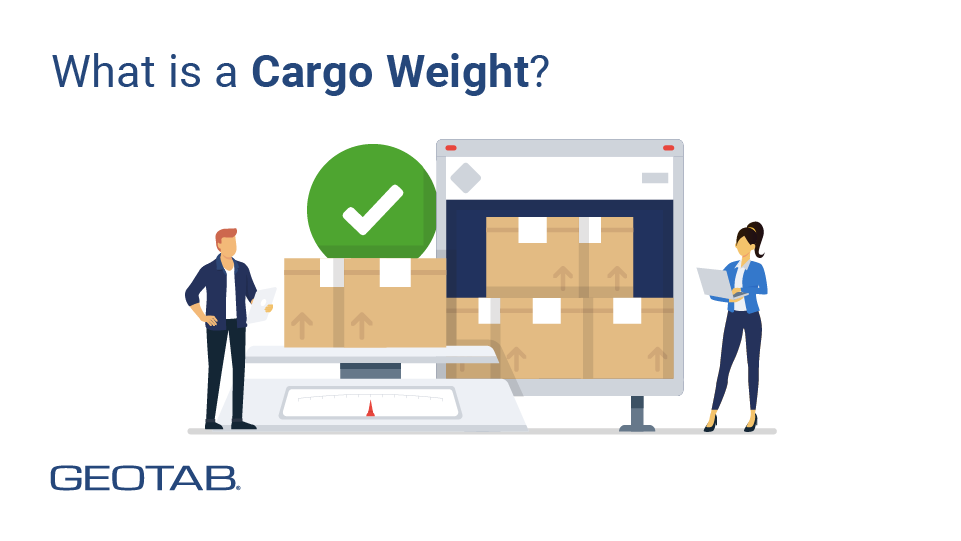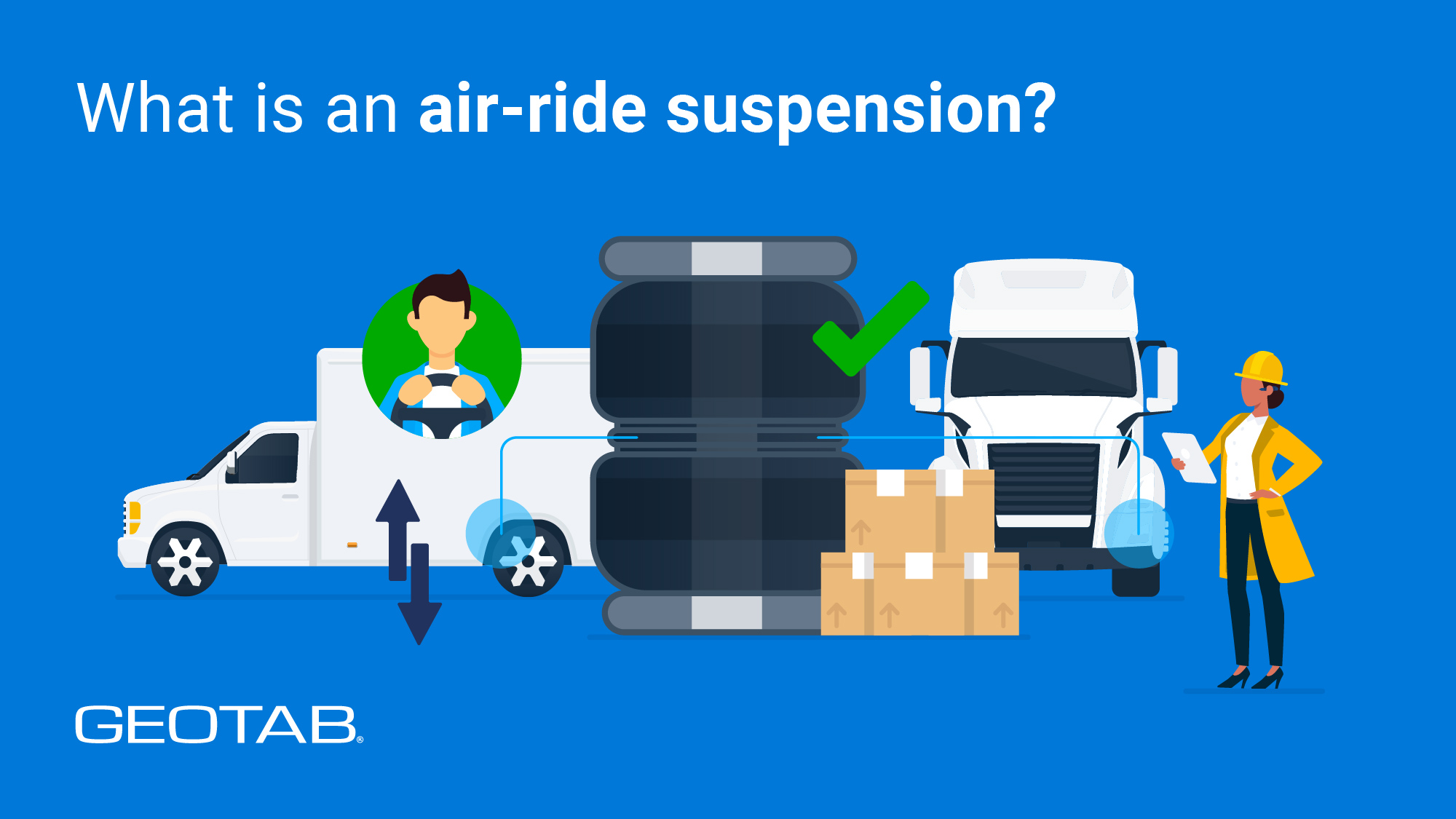What is payload capacity?
January 29, 2025
•4 minute read

Key Insights
- Payload capacity refers to the maximum weight a vehicle can safely carry, including cargo and passengers, without exceeding the manufacturer's specifications.
What is payload capacity?
Payload capacity refers to the maximum weight a vehicle can safely carry, including cargo and passengers, without exceeding the manufacturer's specifications. For fleet managers, understanding payload capacity is crucial for promoting safety, maintaining vehicle performance, and complying with legal regulations. Properly managing payload capacity can help fleet managers reduce vehicle wear and tear, improve fuel efficiency, and optimize operational costs. In this glossary blog post, we will review why payload capacity is important for fleets, how it is calculated, and best practices around its management.
Why is payload capacity important?
Understanding and not exceeding a vehicle’s payload capacity is essential for several reasons:
- Acceleration and braking: Exceeding the payload capacity can diminish a truck’s ability to accelerate and brake efficiently. Overloading puts extra strain on the engine and brakes, increasing the vehicle’s stopping distance and causing wear and tear that will reduce the life of the vehicle.
- Fuel efficiency: Overloading a vehicle makes it consume more fuel, reducing the overall fuel efficiency of the truck and leading to higher operational costs.
- Handling characteristics: When a truck carries too much weight, it becomes harder for a driver to steer. Vehicles exceeding payload may experience reduced stability, increased body roll and difficulties in steering. These factors make a vehicle harder to control, especially during turns and poor weather conditions like rain or snow.
Payload capacity vs. towing capacity
Payload capacity is the weight a vehicle can safely carry in its cargo area while towing capacity measures the maximum weight a vehicle can safely pull behind it on a trailer. Put simply, payload capacity is internal (including all weight inside the vehicle), while towing capacity is external (dealing with outside weight pulled by the vehicle's frame and drivetrain). Both metrics are essential for effective fleet operations, but they are calculated differently and serve distinct purposes.
Importance of accurate payload capacity calculation
Why is it important to calculate payload capacity accurately? Calculating payload capacity is vital for promoting vehicle safety and optimal performance. Miscalculations can lead fleets to overload vehicles, which increases the risk of collisions, fines, and damage to the vehicle.
Here are key terms to understand around payload capacity:
- Gross vehicle weight rating (GVWR): This is the maximum allowable weight of a fully loaded vehicle, including the vehicle itself, passengers, cargo, and fuel.
- Curb weight: This is the weight of a vehicle with all standard equipment, fluids, and a full fuel tank but without passengers or cargo.
- Gross axle weight rating (GAWR): This is the maximum weight each axle of a vehicle can support, making it important for optimizing payload capacity.
How to calculate payload capacity
- Identify the gross vehicle weight rating: (GVWR): You can usually find the GVWR inside the driver-side door frame or in the owner’s manual.
- Determine the vehicle’s curb weight: Weigh the vehicle as it is, including all fluids and a full tank of gas but without passengers and cargo.
- Subtract curb weight from GVWR: The difference is the payload capacity of a vehicle.
For example, if a truck’s GVWR was 10,000 lbs and its curb weight was 7,500 lbs, then its payload capacity would be 2,500 lbs (10,000 lbs - 7,500 lbs = 2,500 lbs).
Factors influencing payload capacity
Key factors determining a vehicle’s payload capacity include:
- Vehicle design and components: The type of chassis, axle configuration, braking system, and suspension system in a vehicle all affect its payload capacity. Heavy-duty trucks often have robust components and strong suspension systems for greater payload capacity.
- Tire load ratings: Vehicle tires all have specific ratings for the weight they can safely support. Using tires with higher load ratings can increase a vehicle’s payload capacity.
- Additional equipment: Adding cargo racks, towing equipment, and other operational equipment to a vehicle will increase that vehicle’s curb weight and hence reduce its payload capacity.
- Material used in manufacturing: If a vehicle was built with lighter-weight materials, this can reduce curb weight and so increase payload capacity.
Common mistakes in payload calculation
Errors in calculating payload capacity can increase the risk of your drivers and vehicles. Here are common calculation mistakes to avoid:
- Ignoring additional equipment weight: Items like toolboxes, aftermarket parts, or auxiliary fuel tanks all add to a vehicle’s curb weight and reduce payload capacity. To optimize your payload capacity, be sure your vehicles are not carrying more equipment than needed.
- Misunderstanding vehicle ratings: Confusing GVWR, curb weight, and payload capacity can lead to incorrect calculations that put your vehicles, drivers, and cargo at risk.
- Not considering passenger weight: While passengers usually weigh much less than cargo, their weight is still part of the payload and must always be accounted for.
Practical tips for managing payload capacity
To best manage your vehicles’ payload capacity, here are some practical tips:
- Regularly inspect and maintain vehicles: Adopt a proactive maintenance program to help your fleet be in optimal condition and handle its rated payloads. Poorly maintained vehicles are more likely to have handling or steering issues when fully loaded with cargo.
- Use weight-distribution hitches: Consider towing a trailer of cargo with a weight-distribution hitch rather than loading all cargo on a vehicle. These hitches evenly distribute the tongue weight across a towing vehicle’s front and rear axles to keep the hitch connection parallel to the road. This can improve vehicle balance and stability when towing full loads, but will not increase the payload capacity of the vehicle.
- Distribute weight evenly: Avoid overloading one side or axle of the vehicle, as this can lead to uneven wear and handling issues.
- Upgrade brakes: Vehicles carrying a full payload will be more difficult to stop, so improving your vehicles’ braking systems is key to managing payload capacity.
- Monitor tire pressure: If a vehicle’s tires are over- or under-inflated, the vehicle may struggle to handle properly when fully loaded with cargo. Always check tire pressure when embarking on a long trip or carrying a full payload.
Strategies to increase payload capacity
To improve the payload capacity of your fleet, here are some best practices:
- Upgrade suspension systems: Adding heavy-duty suspension to your vehicles can improve their ability to carry heavier loads safely.
- Use lightweight materials for equipment and components: Choose lighter materials to reduce the curb weight of your truck and increase payload capacity.
- Optimize cargo storage: The more efficiently you can organize your vehicle storage, the more you can maximize space while minimizing unnecessary weight.
Safety considerations around payload capacity
There are many important safety aspects around payload capacity, including:
- Recognizing overloaded conditions: Know the tell-tale signs of an overloaded vehicle, such as sagging suspension, extended stopping distances, and difficulty steering. Noticing these issues right away will help you act quickly to keep drivers, cargo, and vehicles safe.
- Impacts on vehicle performance: Overloading a vehicle can strain its engine, brakes, and transmission. This not only reduces a vehicle’s lifespan and consumes more fuel, but also puts drivers at greater risk.
- Legal regulations and compliance: Be aware of the Federal Highway Administration rules around payload capacity and those of individual states on your routes. Stay within payload limits to avoid fines and potential liability issues in case of collisions or breakdowns.
Frequently Asked Questions
Yes, you can increase a vehicle’s payload capacity with upgrades such as enhanced suspension systems or stronger tires. However, always consult the vehicle manufacturer’s guidelines to make sure these add-ons will work properly.
Overloading a vehicle can lead to safety hazards, poor handling, mechanical failure, and increased liability risks.
Refer to the owner’s manual or check the manufacturer’s specifications on the vehicle’s information plate. If you cannot find the payload capacity in these materials, use the GVWR - curb weight = payload capacity formula.
GVWR is the total allowable weight of a loaded vehicle, while payload capacity is the weight the vehicle can carry after excluding the curb weight of the vehicle.
Overloading can compromise safety, lead to poor handling, reduce fuel efficiency, and cause premature wear on components like brakes and tires.
Table of Contents
- What is payload capacity?
- Why is payload capacity important?
- Payload capacity vs. towing capacity
- Importance of accurate payload capacity calculation
- How to calculate payload capacity
- Factors influencing payload capacity
- Common mistakes in payload calculation
- Practical tips for managing payload capacity
- Strategies to increase payload capacity
- Safety considerations around payload capacity
Other Stories

March 20, 2025
4 minute read

March 20, 2025
3 minute read

What is an air-ride suspension? The pros and cons
March 13, 2025
2 minute read